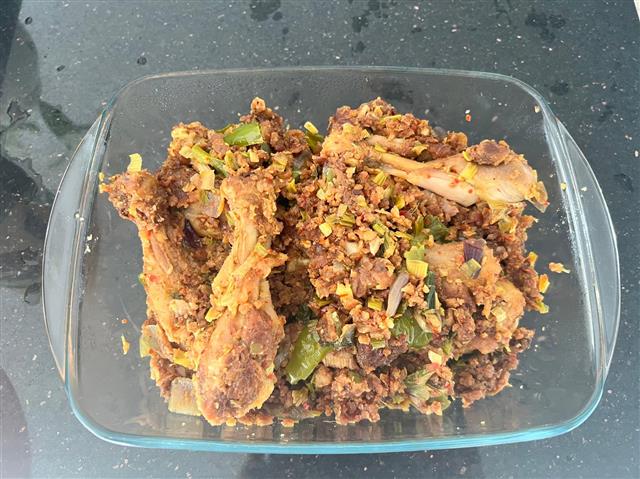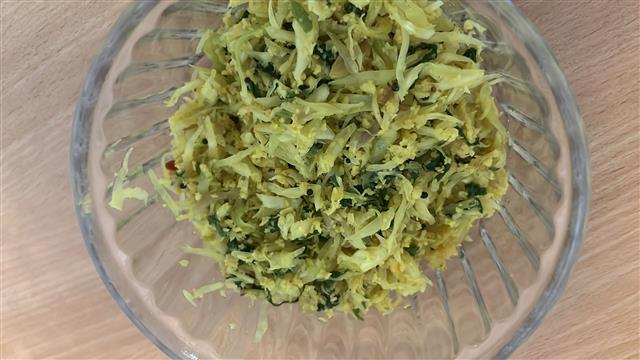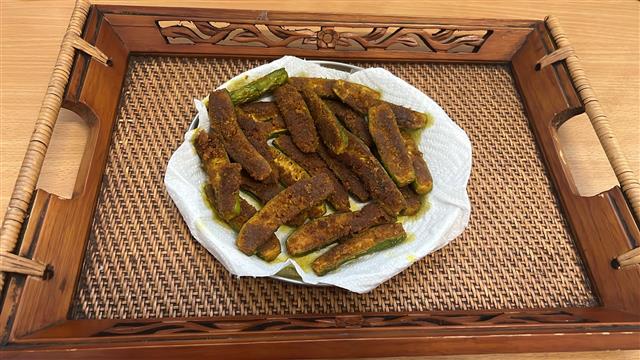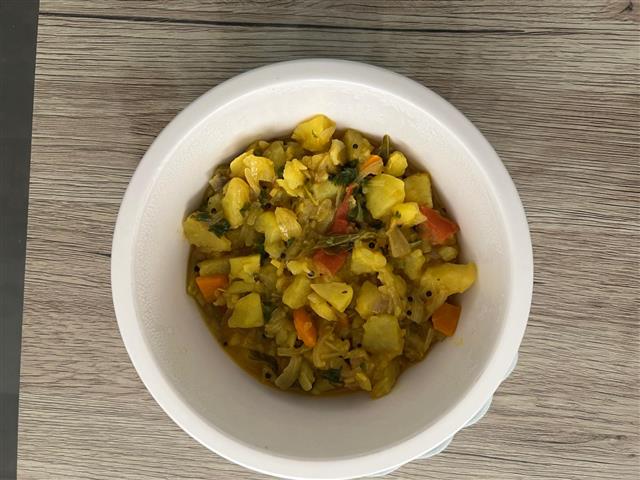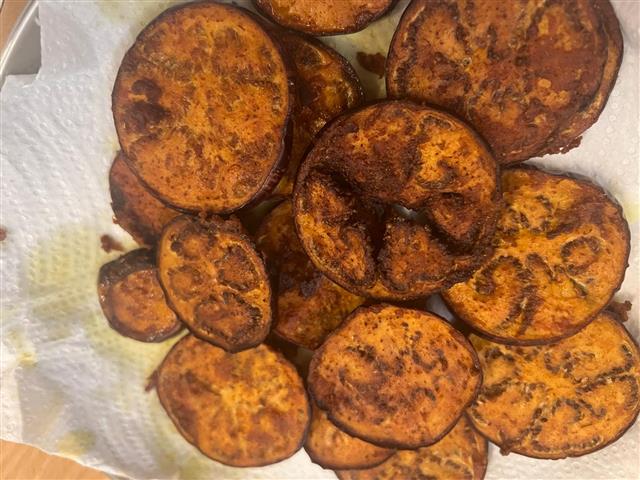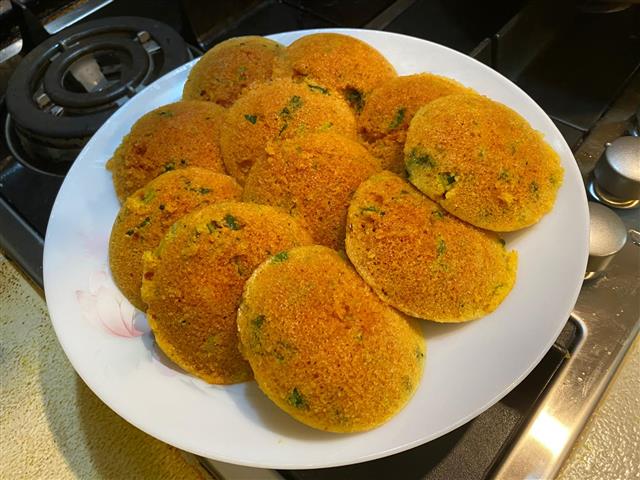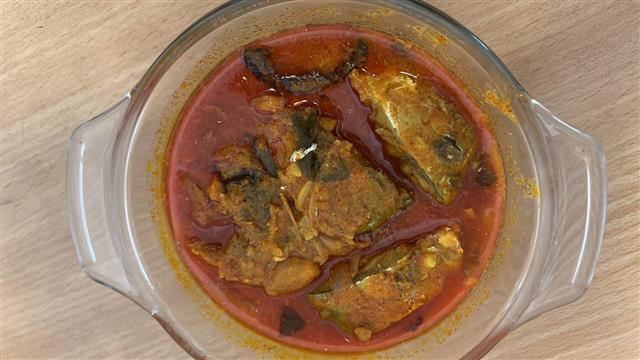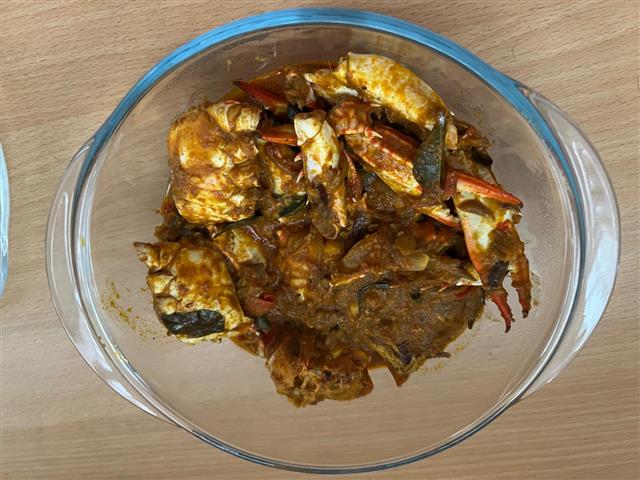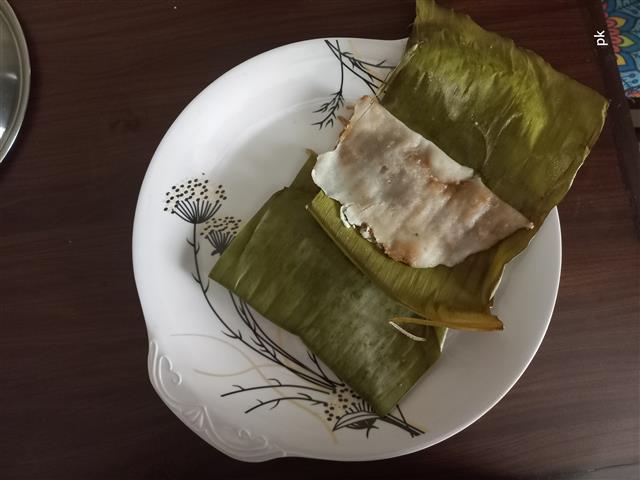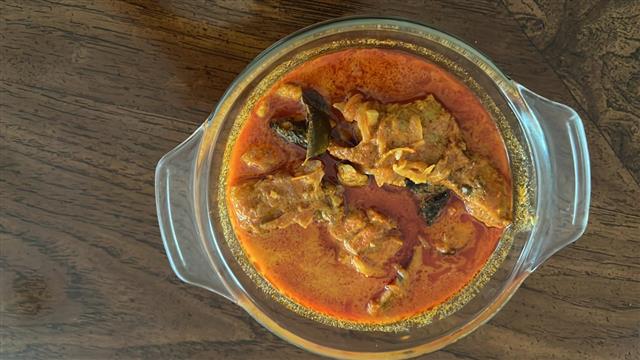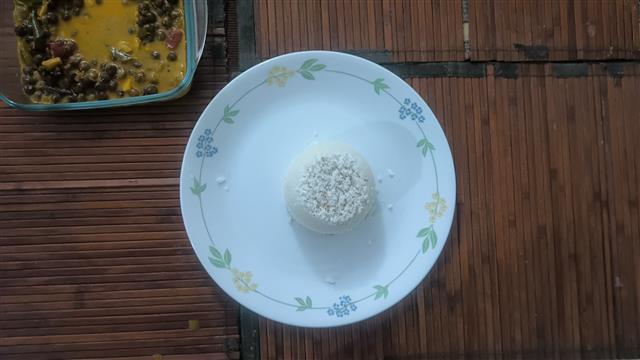
Avial
(4 reviews)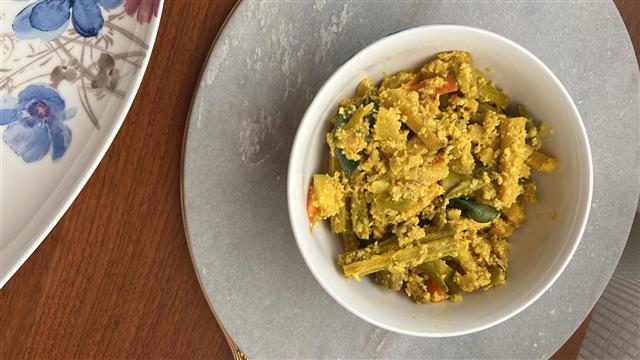
A dish rooted in tradition, Avial (Aviyal) is a coconut-laced vegetable medley tempered with spices, curry leaves and a hint of curd. With the earthy aroma of coconut oil and the warmth of spices, Avial is at the heart of every Sadhya meal. What makes this dish unique is its harmony. Diverse vegetables, textures, and tastes come together to create a delicious and balanced finish.
Ingredients
Directions
- Cut vegetables into thick strips like French fries. Pound together grated coconut, cumin seeds, shallots and green chillies.
- Heat oil in a uruli or kadai. Add the vegetables, salt, turmeric powder and chilli powder and mix well.
- Cook the pieces until they are done, retain some crispiness and do not turn soft.
- When the pieces are cooked, add a little tamarind water.
- Add the coconut masala to the cooked pieces. Add curd and close the lid.
- Once everything is mixed, add coconut oil and curry leaves and mix well.
Cooking Tips
• Cut vegetables uniformly: Stick to 2-inch long batonsor strips to ensure even cooking.
• Don't overcook: Overcooking turns Avial mushy and affects texture. The vegetables should retain structure.
• Use fresh coconut: Frozen coconut works in a pinch, but freshly grated coconut brings unmatched aroma.
• Balance sourness: Tamarind gives a sharper tang while curd lends a mellow acidity. Adjust based on preference.
• Low flame cooking: Once you add the coconut paste and curd, avoid cooking on high heat to prevent the stew from curdling.
How to Serve
• As a Side dish in a mini or full Sadhya.
• With Steamed matta rice and parippu or rasam
• With Adai or Dosa
• With Rice Kanji (Congee)
The Story Behind Avial
An everyday dish in Kerala households, valued for its nutritional richness, simplicity, and comforting taste.
The name Avial translates roughly to boiled or mixed in Malayalam, reflecting the essence of the dish. Its origins dates back centuries and is rooted in Kerala's village lifestyle, where local produce and coconut are abundant.
In daily Kerala meals, Aviyal holds a special place because it brings together an array of seasonal vegetables, making it a nutritious food. It complements the rice-centric meal by adding fibre, vitamins, and natural fats from coconut oil and coconut paste, making the meal balanced and satiating.
Many Kerala families prepare this iconic dish fresh for lunch or dinner, often making just enough for that meal, (as the taste and texture are best when eaten fresh). It's considered a comfort food, both light and filling, ideal for the humid tropical climate. The mellow, slightly tangy taste helps soothe the palate, especially when served alongside spicy curries and tangy sambar.
This dish is a important part of Kerala's culinary heritage, and showcases the use of local, seasonal vegetables with coconut, another staple in Kerala kitchens. Avial is typically served as a side with rice and adds a cooling, subtly spiced contrast to richer or spicier dishes.
What Is Avial?
Avial is a thick, semi-dry vegetable dish native to Kerala and Tamil Nadu. Made with seasonal vegetables, it's gently soured with either curd and tamarind or raw mango, depending on regional variations. A staple in Sadhya, the traditional vegetarian feast served on banana leaves.
A mixed vegetable stew that blends a medley of vegetables with freshly grated coconut, green chilies, and a unique tempering of curry leaves and coconut oil. Creamy, mildly spiced, and tangy with a hint of raw mango or tamarind, Avial stands out as a comforting and wholesome dish. It's traditionally prepared as a thick side, with vegetables cooked just until tender, and finished with a generous amount of spiced coconut paste and a drizzle of fragrant coconut oil.
What sets this tangy-sweet dish apart is the use of vegetables cut lengthwise and its unique seasoning method. There is no mustard or cumin seed tempering.
Ingredient Spotlight
Elephant Foot Yam (Chena) is high in fibre, low on glycemic index, and supports digestion and heart health.
Raw Nendra Banana is great for energy and gut health.
Drumstick (Muringakka) is rich in iron and calcium. it boosts immunity .
Ash Gourd (Kumbalanga) Cooling and hydrating—perfect for hot climates and detox meals.
Snake Gourd (Padavalanga) is high in fiber, and great for digestion and skin clarity.
Carrot adds color and beta-carotene which is good for vision and skin.
Green Beans (Payaru) is protein-packed and hearty with fibre.
Kerala versus Tamil Nadu Avial
Avial is cherished across Kerala and Tamil Nadu, but each region brings its own twist.
Kerala-style Aviyal is semi-dry, rich in coarsely pounded coconut, and finished with raw coconut oil and curry leaves. It may use curd and tamarind for a mild tang and is a staple in Sadhya feasts.
Tamil Nadu-style Avial is often paired with adai (lentil dosa) or ghee rice. it has a thinner consistency, a smoother coconut paste, and usually relies on curd as the sole souring agent. More vegetables, particularly tubers, pumpkin, and even French beans are added in many homes. It may include more cumin or even garlic, skip onions, and in some regions, gingelly or peanut oil replaces coconut oil.
While Kerala keeps it mild and festive, Tamil Nadu's version leans slightly more robust.
Avial is more than a dish, rather an ode to Kerala's agrarian roots. When made with care, each bite is creamy, aromatic, and balanced with the freshness of produce and the warmth of tradition. It's not just food but comfort in each spoonful.
Pro Tips for Perfect Results
→ Uniform cuts: Slice all vegetables into equal-sized batons for even cooking.
→ Don't overcook: Keep vegetables tender but firm, not mushy.
→ Add coconut oil last: Drizzle raw at the end for that classic Kerala aroma.
→ Coarse coconut paste: Pound or pulse but don't overblend.
→ Let it rest: Cover and let the dish sit for 5 minutes before serving to deepen flavour.
Avial Variations
- Without tamarind:
Some regions use only curd for the sourness.
- With coconut milk:
For a creamy twist, add 2 tbsp of coconut milk at the end instead of curd.
- With raw mango:
Add chopped raw mango pieces instead of tamarind for a naturally tangy variant.
- No onion version:
For a jain version, omit shallots from the coconut paste.
- With moringa leaves:
Add a handful of moringa (drumstick) leaves a subtle herbal flavor.
Diet-Friendly Adaptations
• Vegan:
Simply skip curd or use vegan alternatives like cashew or coconut yogurt.
• Low-oil:
The dish already uses minimal oil, but you can reduce coconut oil to 1 teaspoon.
• Low-carb:
Skip banana and yam to reduce starch, and increase ash gourd and snake gourd.
Storing & Reheating Tips
→ Fridge: Store in an airtight container for up to 2–3 days. Avial tends to dry out, so refrigerate quickly after cooling.
→ Reheat: Sprinkle water and reheat on the stovetop on low heat, covered. Tip:Avoid microwaving as it can dry out the coconut.
→ Freeze: Not recommended. Avial doesn't freeze well due to the curd and fresh coconut texture.
Common Mistakes to Avoid
→ Using watery curd: Use thick, slightly sour curd.
→ Over-boiling vegetables: This turns the dish into a mash. Watch carefully and stop when vegetables are just done.
→ Skipping curry leaves: These are non-negotiable for authentic flavour.
→ Adding coconut oil early: Always finish with coconut oil after turning off the heat to preserve its nutty aroma.
Frequently Asked Questions
- Can I use frozen mixed vegetables?
Yes, but make sure to thaw completely and cut them into the right shape.
- Can I use only curd or only tamarind?
Absolutely. You can make without tamarind. Curd gives a tang and creaminess.
- Is Avial spicy?
No, it's mildly spiced. The green chillies and chilli powder are balanced by coconut and curd.
- What type of curd is best?
Use thick, slightly sour curd. Avoid fresh, sweet curd as it won't provide enough tang.
Equipment Needed
→ Flat-bottomed pan or Uruli
→ Knife and cutting board
→ Small mixer or Mortar-pestle for coconut paste
→ Measuring spoons and cups
→ Lid for cooking vegetables
→ Spatula or Ladle for mixing
